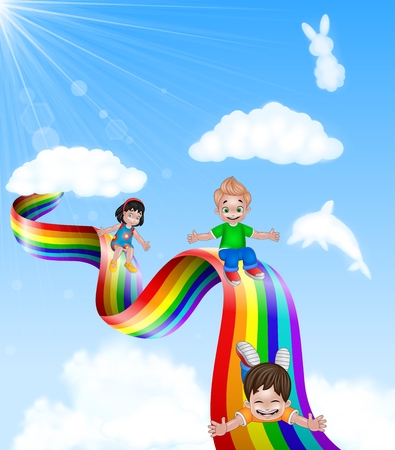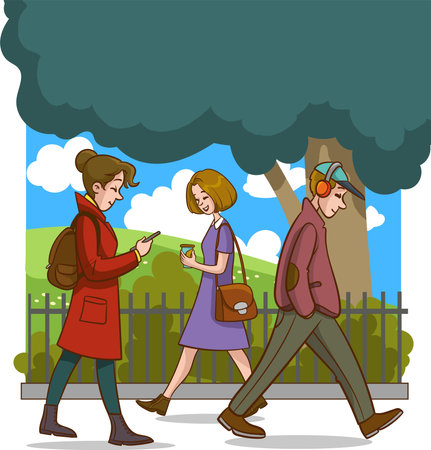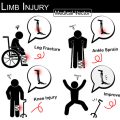Understanding Childhood Trauma and Adverse Childhood Experiences (ACEs)
Childhood trauma refers to experiences or events during childhood that cause intense physical or emotional harm. These traumatic events can have a lasting effect on a childs sense of safety, trust, and ability to cope with everyday life. In the United States, many children face such challenges, which can shape their development well into adulthood.
What Are Adverse Childhood Experiences (ACEs)?
Adverse Childhood Experiences, often called ACEs, are specific types of traumatic events that occur before the age of 18. The Centers for Disease Control and Prevention (CDC) first identified ACEs through a landmark study, showing how these experiences can impact long-term health and well-being. ACEs are grouped into three main categories: abuse, neglect, and household challenges.
Common Examples of ACEs in the U.S.
| Category | Examples |
|---|---|
| Abuse | Physical abuse, emotional abuse, sexual abuse |
| Neglect | Physical neglect (not having enough food or clean clothes), emotional neglect (lack of affection or support) |
| Household Challenges | Witnessing domestic violence, living with family members who have substance use problems or mental illness, parental separation or divorce, incarceration of a family member |
Prevalence of ACEs Among Children in America
In the United States, ACEs are unfortunately quite common. According to recent research and national surveys:
- About 1 in 6 adults report experiencing four or more different types of ACEs during childhood.
- Nearly two-thirds of adults say they had at least one ACE as a child.
- Certain groups—such as children living in poverty or those from marginalized communities—are at higher risk for experiencing multiple ACEs.
The high prevalence of childhood trauma and ACEs in American society highlights the need for awareness and early intervention to support childrens mental health and overall well-being.
2. Linking ACEs to Long-term Mental Health Outcomes
Understanding ACEs and Their Lasting Effects
Adverse Childhood Experiences (ACEs) refer to stressful or traumatic events that happen during childhood, such as abuse, neglect, or growing up in a household with mental illness or substance abuse. In the United States, decades of research have shown that these early-life traumas can have a powerful impact on mental health later in life.
How Early Trauma Shapes Mental Health
When a child experiences trauma, their brain and body respond with stress reactions. If these stresses are frequent or severe, they can change how the brain develops and how it handles future stress. This makes it more likely for someone to develop chronic mental health issues as an adult, like anxiety, depression, and post-traumatic stress disorder (PTSD).
U.S.-Based Studies and Statistics
The connection between childhood trauma and long-term mental health problems is well-documented in American research. For example:
| Type of Mental Health Issue | Increased Risk After 4+ ACEs | Key U.S. Study/Source |
|---|---|---|
| Anxiety Disorders | Over 2x more likely | CDC-Kaiser ACE Study (1998) |
| Depression | Nearly 5x more likely | CDC-Kaiser ACE Study (1998) |
| PTSD | Up to 7x more likely | National Comorbidity Survey Replication (NCS-R) |
The ACE Score Explained
The “ACE score” is a simple count of how many types of adverse experiences someone had as a child. The higher the score, the greater the risk for mental health challenges later on. For instance, someone with an ACE score of 4 or more has a much higher chance of struggling with depression or anxiety than someone with no ACEs.
Common ACEs in the U.S.
- Physical, emotional, or sexual abuse
- Household member with mental illness or addiction
- Divorce or separation of parents
- Poverty or homelessness
- Bullied at school or in their community
The Lifelong Impact on Well-being
The effects of childhood trauma don’t simply disappear as people grow up. Many American adults continue to struggle with anxiety, depression, or PTSD that started from events they faced early in life. Recognizing these patterns helps doctors and therapists better support those who need help overcoming these challenges.

3. Societal and Environmental Influences
How Society and Environment Shape Childhood Trauma
When we talk about childhood trauma in the United States, it’s important to look beyond individual experiences. Many social and environmental factors play a big role in both how kids are exposed to trauma and how they recover from it. Here’s a closer look at some of these key influences:
Socioeconomic Status (SES)
Children growing up in low-income families often face extra stressors like food insecurity, unstable housing, and limited access to healthcare. These challenges can make it harder for them to cope with traumatic events. On the other hand, families with more resources usually have better access to mental health support and safer neighborhoods.
| Socioeconomic Status | Potential Impacts on Trauma |
|---|---|
| Low SES | Higher exposure to violence, less access to therapy, increased family stress |
| High SES | More resources for recovery, safer environments, better healthcare access |
Family Structure
The makeup of a child’s family—whether they live with both parents, a single parent, or extended family—can affect how they experience and heal from trauma. Children in stable and supportive households usually have more protection against the negative impacts of adversity. In contrast, those experiencing divorce, parental incarceration, or frequent moves may be more vulnerable.
Racial Disparities
In the U.S., children from marginalized racial and ethnic groups often face additional stress due to discrimination, racism, and lack of culturally sensitive care. These factors can increase the risk of trauma and also make it harder for children to get the help they need.
| Group | Common Challenges Related to Trauma |
|---|---|
| BIPOC (Black, Indigenous, People of Color) | Discrimination, fewer mental health resources, cultural stigma around seeking help |
| White Children | Easier access to services in many areas, less systemic discrimination but still at risk for trauma from other sources |
Community Violence
Kids who grow up in neighborhoods where violence is common are at higher risk for experiencing trauma firsthand or witnessing traumatic events. Community programs that promote safety and offer support can make a big difference in helping children recover.
Educational Environments
Schools play an important part in either supporting or failing students who have experienced trauma. Supportive teachers, counselors, and inclusive policies can help kids feel safe and understood. However, underfunded schools or those without mental health resources might not be able to give students the help they need.
A Quick Look: How U.S. Environmental Factors Influence Trauma Recovery
| Factor | How It Can Affect Trauma Exposure & Recovery |
|---|---|
| Poverty | Increases risk; limits recovery options |
| Family Instability | Makes coping harder; increases vulnerability |
| Racial Inequality | Adds layers of stress; limits access to care |
| Unsafe Neighborhoods | Raises risk of direct/indirect trauma exposure |
| Lack of School Support | Makes it tough for kids to get help at school |
Together, these factors show that childhood trauma isn’t just about what happens inside the home. The broader community and society shape both risks and opportunities for healing as well.
4. Intervention and Prevention Strategies
Understanding the Importance of Early Action
In the United States, addressing childhood trauma and adverse experiences is a priority for protecting long-term mental health. Taking action early can make a big difference in helping children recover and thrive. Prevention, early intervention, and trauma-informed care are key approaches used across schools, healthcare settings, and community organizations.
Prevention and Early Intervention in Schools
Schools play a critical role in both prevention and early identification of childhood trauma. Many U.S. schools use programs that teach social-emotional skills, create safe environments, and provide resources for students who may be struggling. Counselors, teachers, and school psychologists often work together to spot signs of trauma early and connect students with support.
| School-Based Strategies | Description |
|---|---|
| Social-Emotional Learning (SEL) | Programs teaching children to manage emotions, set goals, and build positive relationships. |
| Mental Health Screenings | Routine check-ins to identify students who may need help or further assessment. |
| Safe Spaces & Support Groups | Designated areas or peer-led groups where students can talk about their experiences safely. |
The Role of Healthcare Providers
Pediatricians, family doctors, and mental health professionals are often the first to notice signs of trauma during regular checkups. In the U.S., many healthcare providers use screening tools to ask about Adverse Childhood Experiences (ACEs). When needed, they refer families to counseling or specialized services. Trauma-informed care means treating each patient with understanding and avoiding actions that might re-trigger traumatic memories.
| Healthcare Strategies | Description |
|---|---|
| ACEs Screening Tools | Short surveys filled out by parents or older children about past stressful events. |
| Integrated Behavioral Health Services | Mental health support offered within primary care clinics so help is easy to access. |
| Family Education & Resources | Doctors give information on coping skills, parenting support, and local resources. |
The Power of Community Organizations
Community organizations—like Boys & Girls Clubs, YMCA/YWCA, faith-based groups, and neighborhood centers—help prevent trauma by providing safe places for kids to learn and play. They also offer afterschool programs, mentoring, crisis hotlines, and workshops for parents. These organizations often collaborate with schools and healthcare providers to create a strong safety net for children at risk.
Examples of Community Support Programs:
- Youth mentoring programs pairing kids with caring adults for guidance and friendship.
- Crisis intervention hotlines offering immediate help for families in distress.
- Parent education classes teaching positive discipline and stress management techniques.
- Cultural or recreational activities building confidence and connections among peers.
Trauma-Informed Care: A Unified Approach
The concept of “trauma-informed care” guides all these efforts in the U.S. It means recognizing that many people have experienced adversity—and responding with empathy rather than judgment. Staff in schools, medical offices, and community centers receive training on how trauma affects behavior and learning. This approach helps children feel seen, heard, and supported as they heal from difficult experiences.
5. The Path Forward: Building Resilience and Supporting Recovery
Promoting Resilience in Children and Adults
Resilience is the ability to bounce back from difficult experiences, and it plays a key role in helping people who have faced childhood trauma. Building resilience is not just about individual strength—it also comes from supportive communities, schools, and families. Here are some methods for promoting resilience:
| Resilience-Building Method | Description |
|---|---|
| Stable Relationships | Having at least one caring, reliable adult—such as a parent, teacher, or mentor—can make a big difference for kids facing adversity. |
| Social-Emotional Learning (SEL) | Programs in schools that teach kids how to manage emotions, set goals, and build healthy relationships support long-term mental wellness. |
| Mindfulness and Coping Skills | Practicing mindfulness, breathing exercises, and positive self-talk helps both children and adults handle stress in healthier ways. |
| Access to Therapy | Counseling or therapy with a mental health professional offers tools for healing and growth after traumatic experiences. |
Destigmatizing Mental Health Care
Mental health struggles are common, but stigma can stop people from getting the help they need. In the U.S., talking about mental health openly and honestly helps break down barriers. Ways to destigmatize mental health care include:
- Sharing Personal Stories: When public figures or everyday people talk about their own journeys with mental health, it helps others feel less alone.
- Normalizing Therapy: Encouraging conversations that view therapy as a normal part of self-care can change attitudes.
- Mental Health Education: Teaching students about mental health in schools makes seeking help more acceptable and accessible.
- Diversity in Providers: Increasing the number of therapists from different backgrounds ensures everyone feels represented and understood.
Advocating for Policy Changes
The U.S. can better support people affected by childhood trauma through policy changes at local, state, and federal levels. Advocates work to:
- Increase Access to Services: Expanding Medicaid coverage for mental health services means more families can get care regardless of income.
- Fund Community Programs: Investing in after-school programs, mentorship opportunities, and family support services builds safer environments for kids.
- Mandate Trauma-Informed Training: Requiring teachers, police officers, and healthcare workers to receive training about trauma helps them respond with understanding instead of punishment.
- Support Research Initiatives: Funding research on Adverse Childhood Experiences (ACEs) helps us learn what works best for prevention and recovery.
Together We Can Make a Difference
No one has to face the effects of childhood trauma alone. By working together—as families, communities, professionals, and policymakers—we can create a future where every child and adult has the chance to heal, thrive, and reach their full potential.


